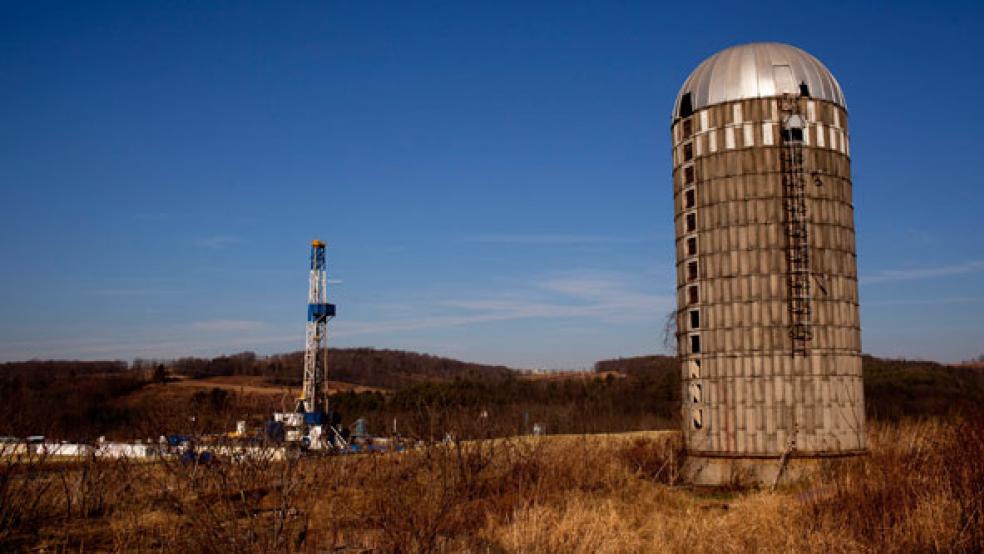A new study has cast serious doubt on whether the much-ballyhooed U.S. shale oil and gas revolution has long-term staying power.
The U.S. produced 8.5 million barrels of oil per day in July of this year -- 60 percent more than just three years earlier. That is also the highest rate of production in three decades.
Put another way, since 2011, the U.S. has added 3 million barrels per day in additional capacity to global supplies. Had that volume not come online, oil prices would surely be much higher than they currently are.
Related: Gas Prices Are About to Hit a Key Symbolic Mark
That has “revolutionized” the energy industry and geopolitics, as scores of energy analysts have claimed. The Energy Information Administration (EIA) forecasts that U.S. oil production will hit 9.6 million barrels per day (bpd) in 2019, and gradually decline to 7.5 million bpd by 2040.
This would allow the U.S. to be one of the world’s top oil producers for an extended period of time. With such an achievement now at hand, many analysts are predicting an era of American dominance in geopolitics. For example, in an op-ed on Oct. 20, columnist Joe Nocera considered a “world without OPEC,” in which U.S. oil production soon kills off the oil cartel.
Or consider this rather triumphalist piece in Foreign Affairs from earlier this year, where two former National Security Council members who worked under President George W. Bush boasted that the recent surge in oil production “should help put to rest declinist thinking” and “sharpen the instruments of U.S. statecraft.” In the following issue, Ed Morse of Citibank went further. “Despite its doubters and haters, the shale revolution in oil and gas production is here to stay,” he declared.
But a new report throws cold water on the thinking that U.S. shale production will be around for the long haul. The Post Carbon Institute conducted an analysis of the top seven oil and top seven natural gas plays, which together account for 89 percent of current shale oil production and 88 percent of shale gas production.
Related: The North Dakota Oil Boom Now Pays for College
The report found that both shale oil and shale gas production will peak before 2020. More importantly, the report’s author, David Hughes, says oil production will decline much more quickly than the EIA has predicted.
That’s largely because of high decline rates at shale wells across the country. Unlike conventional wells, which can produce relatively stable rates for a long period of time, shale oil and gas wells experience an initial burst of production in the first few years, followed by a precipitous decline thereafter.
Hughes estimates that the average shale oil well declines at a rate of between 60 and 91 percent over three years. Wells in the Bakken decline by 45 percent per year, which stands in stark contrast to the 5 percent annual decline for an average conventional well.
Or put another way, oil and gas companies will have to keep drilling at a feverish pace just to stand still. This means the industry is on a “drilling treadmill” that will be unsustainable over the long-term.
Related: Falling Gas Prices Could Provide $40 Billion Boost to the Economy
Predicting what oil production will be in 25 years is difficult, to say the least, but the Post Carbon report projects that oil production from the Bakken and Eagle Ford will be just one-tenth of the level that EIA is forecasting. The EIA predicts that the Bakken and the Eagle Ford will be producing a combined 1 million bpd in 2040. Hughes thinks it will be just a small fraction of that amount – a mere 73,000 bpd.
This is not the first time that David Hughes has taken aim at EIA data. In a December 2013 report, he skewered the high estimates for the potential of the Monterrey Shale in California, calling the EIA’s numbers “simplistic and highly overstated.” Several months later, the EIA was forced to back track on its figures,downgrading the recoverable oil estimates in the Monterrey by 96 percent.
Hughes says the implications of getting it wrong are “profound,” since so many companies are basing very large investments on incorrect projections. He says rosy estimates have cut into investment for renewables, while steering capital towards expensive oil and gas export terminals that should now be called into question.
An article in CleanTechnica points to the possibility of boom towns turning into “ghost towns” if the pace of drilling drops off. If David Hughes and The Post Carbon Institute are correct, there could be quite a few ghost towns popping up in the coming years as the shale revolution begins to fizzle.
This article originally appeared at OilPrice.com.
Read more from OilPrice.com:
Texas RRC Oil and Gas Report, August Data
Oil Price Recovery Will Be Slow, Steady And Painful
8 Reasons For Our Oil Price Predicament




